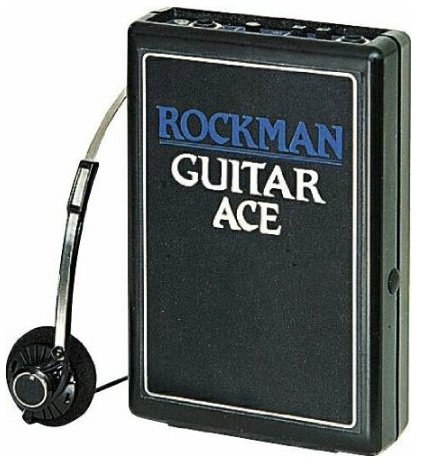Amplifier modeling was created to offer studio-quality representations of the world’s most popular amplifiers, cabinets and effects, while avoiding the struggles of capturing a mic’d-amp tone in a live or studio environment. Though still controversial among musicians, these days you’ll find amp modeling technology in or on most every guitarist’s bedroom, studio or stage. Even if you don't use it, there's likely amp modeling software waiting on your laptop or smartphone via Garageband or other DAW.

The first widespread example of amp modeling came when Tom Scholz, guitarist for the band Boston, launched the all-analog Rockman headphone amplifier in 1982. The Rockman gave guitarists an easy way to get a huge, professional sounding guitar tone out of a piece of equipment roughly the size of a DI box.
Andrew Barta’s company Tech 21 followed suit in 1989, releasing the iconic SansAmp. This pedal-based modeler lets you dial in three different sounding guitar amp and cabinet simulations. Evan as the digital revolution was about to take hold, the SansAmp developed a following and continues going strong.
Marcus Ryle and Michel Doidic’s company Line 6 introduced the groundbreaking, desktop-based POD in 1999. For the first time, guitarists were able to get dozens of quality digital representations of the most iconic guitar amplifiers, cabinets and effects from one small box. The industry quickly took notice and similar products flooded the market.

Digital amp modeling is more prevalent today than ever, and the technology is powerful enough to model equipment down to its individual components. Units such as Line 6’s Helix, the Kemper Profiler and the incredibly popular Fractal Audio Axe-FX deliver sounds so convincing that many professional players either have integrated modeling technology into their gear, or based their live and studio rigs on these units. The modeling combo amplifiers offered by Peavey, Vox, Blackstar, Roland and Line 6 are among the best-selling amps in the world. And software-based modelers, like IK Multimedia’s AmpliTube and Positive Grid’s BIAS, are available for use on your favorite mobile devices.

The arguments against amplifier modeling are quickly dissipating as the power and convenience of these products continues to increase. With the live music trend swinging toward quieter stages and in-ear monitoring, and with digital tones being more consistent than mic’d amplifiers, going direct with a high-quality modeler is becoming a very popular option. And, just as the original POD did more than a decade ago, modeling technology continues to cram more tones, with better performance, into your computer, rack units, pedalboards, or even smartphones and tablets.
Tube purists are always going to go to bat for the amplifiers of yesteryear. As well they should. But with amplifier modeling, musicians today have more options for creating great-sounding guitar tones than ever before. So love them or hate them, amplifier modeling doesn’t look to be on the way out any time soon. Maybe it’s time to embrace the revolution.
Love it or hate it, amp modeling technology is a huge and growing area of interest, and one that we will be exploring in more depth. Tell us what makes, models and features you find most useful in the comments below, and help us build this out in future stories.
Reverb's Next Top Amp Model